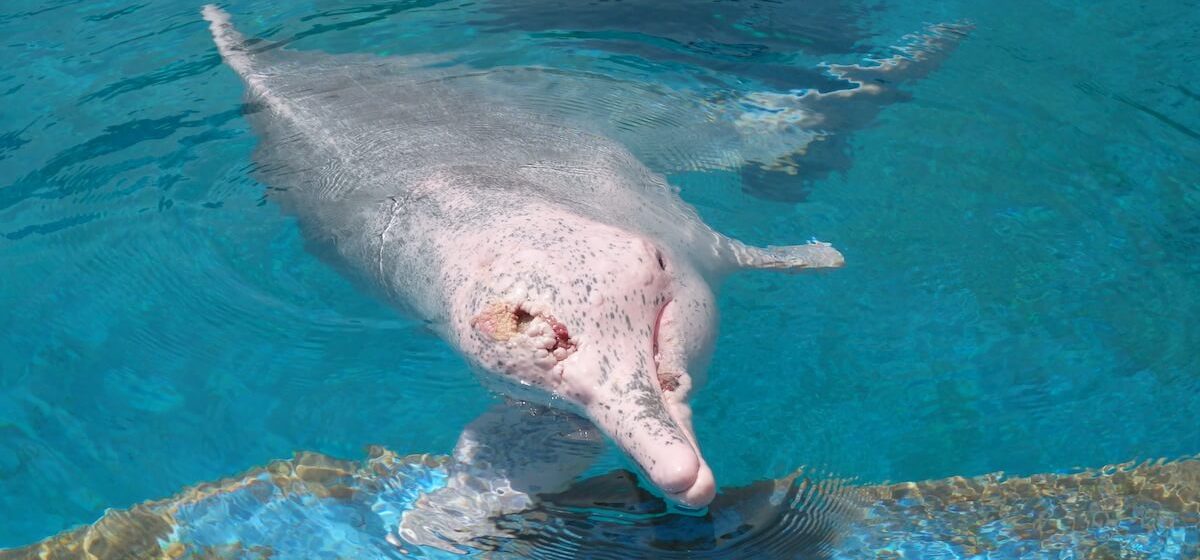Other projects in Indonesia
In sea enclosures, rescued dolphins can learn to live independently in the sea again. For years they had to entertain tourists with tricks to get food. If the animals are strong enough, they leave the SeaPen to (re) discover the ocean.
Swimming with dolphins
In Indonesia and Bali there are a number of places where tourists can swim with dolphins. For many people that sounds like music to the ears. They are beautiful, graceful and always have a smile on their face; a purely anatomical feature that tells nothing about their emotions. Yet people often think that the animals are having a good time.
But dolphins should not live in captivity. After being snatched away from their families, they live with strange peers in pools that are way too small and in which they cannot hunt, play or communicate with other dolphin groups via sonar. In captivity, the animals turn off their sonar because the walls of the cage bounce off the sound: for dolphins, this is maddening. Without sonar it is not possible to catch fish themselves, so the animals perform every trick just to be rewarded with food.

Back to the ocean
In August 2019, a large resque operation was made possible by the authorities assisted by stichting Jaan/Dolphin Project. Four dolphins were rescued from a hotel in Bali, where they previously entertained tourists for years. One of the dolphins turned blind because of the chlorinated water in which they were kept. The other one no longer has teeth. For more than two months they were cared for at the hotel by their regular supervisors before they were strong enough for transportation. Then they were transported to the coast of Bali.
On Bali, the animals are rehabilitating in a new sea cage from Wildlife Watchdogs. Our other sea cage is at Thousand Islands, a long journey these vulnerable dolphins would not survive. The sea enclosures are largely open so that fish can swim through them and the dolphins get used to their natural habitat. They practice hunting for fish, learn to use their sonar again and slowly become resistant to natural enemies. When the dolphins are ready, they leave the cage to rediscover the ocean.
Ric O'Barry
The transport, maintenance and building of sea enclosures is very costly. The project is fully supported by Ric O'Barry's Dolphin project. O'Barry became worldfamous in the sixties by his work as the dolphintrainer of the popular tv show Flipper. After a few years he radically changed course. By now, he's been campaigning for over 50 years against keeping dolphins in captivity. Read more about the celebrated animal rights activist.
Donate to the Dolphin Project